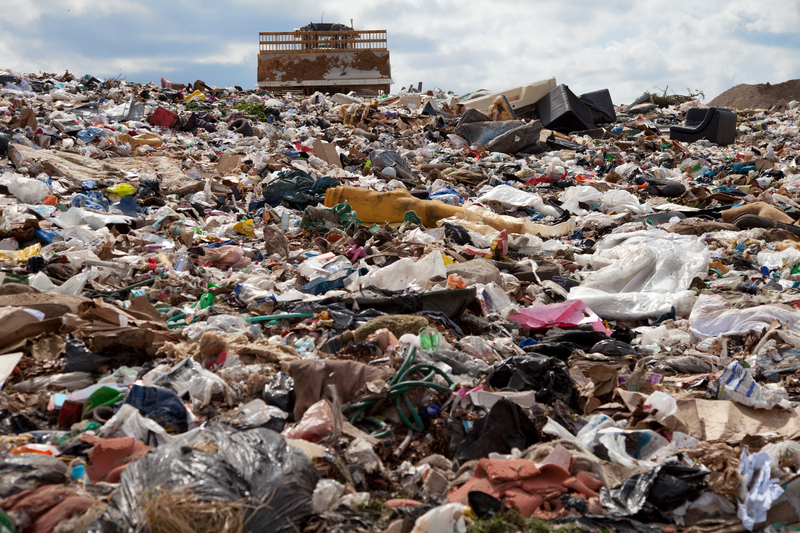Why Recycling Pots and Pans Helps the Planet
In a world where environmental conservation is increasingly crucial, every decision we make regarding waste management has a profound impact. Recycling pots and pans is one of these choices--often overlooked, but undeniably significant. This comprehensive article explores how recycling kitchenware supports environmental sustainability, the benefits, the recycling process, and actionable tips for eco-friendly disposal of your old cookware.
Table of Contents
- The Environmental Impact of Pots and Pans
- Key Reasons to Recycle Cookware
- What Types of Pots and Pans Can Be Recycled?
- How the Cookware Recycling Process Works
- Creative Ways to Reuse and Repurpose Old Cookware
- How to Find Recycling Centers Near You
- Tips for Eco-Friendly Kitchen Swaps
- Conclusion: Making a Sustainable Choice
The Environmental Impact of Discarding Pots and Pans
When it comes to environmental waste, old pots and pans often end up in landfills, despite being made of valuable, recyclable materials. The improper disposal of cookware has the following negative consequences:
- Resource Waste: Aluminum, stainless steel, copper, and cast iron are finite resources. Throwing them away increases the demand for new mining and production, which consumes significant energy and water.
- Landfill Overflow: Pots and pans are bulky and can take decades or even centuries to decompose in landfill conditions, occupying valuable space and contributing to environmental blight.
- Toxic Leaching: Non-stick coatings or lids made from plastic and glass can break down slowly, leaching chemicals or microplastics into the soil and groundwater.
- Greenhouse Gas Emissions: Manufacturing new metal products generates a large carbon footprint. By recycling, we save energy and dramatically reduce emissions associated with the raw production process.
Recycling pots and pans isn't just about decluttering; it's about making a conscious choice to reduce your environmental impact and promote a circular economy.
Key Reasons to Recycle Pots, Pans, and Kitchenware
1. Conserving Natural Resources
Most cookware is made from metals easily reclaimed and reused. When recycled, these materials can be turned into new products with minimal quality loss, reducing demand for virgin resources. According to the Bureau of International Recycling, recycling aluminum, for example, saves up to 95% of the energy required for primary production.
2. Saving Energy
Mining, transporting, and processing new metals for pots and pans is a highly energy-intensive endeavor. By recycling old metal cookware, the energy cost is slashed, resulting in significant environmental savings. The U.S. Environmental Protection Agency notes that recycling one ton of steel saves enough electricity to power a home for almost a week.
3. Reducing Greenhouse Gas Emissions
Lower energy use directly translates into reduced greenhouse gas emissions. Every recycled pot or pan helps cut the carbon footprint associated with the manufacture of new kitchenware.
4. Supporting the Circular Economy
Recycling kitchen cookware keeps valuable materials in use for longer, fueling a circular economy where waste becomes the raw material for future products. This minimizes environmental impact and creates economic opportunities.
5. Minimizing Landfill and Pollution
Metal cookware in the landfill occupies space, while plastic or non-stick coated pots and pans can release pollutants. Recycling ensures proper handling and reduces the risk of environmental contamination.
What Types of Pots and Pans Can Be Recycled?
Not all kitchenware is processed in the same way, but most can find new life if properly sorted. Here's a breakdown:
- Aluminum Pans: Lightweight, rust-resistant, and easily recyclable.
- Stainless Steel Cookware: The most commonly recycled kitchen items, accepted by most scrap yards and recycling centers.
- Copper Pots: Highly valuable in recycling markets, though often have other materials (like handles) that should be removed.
- Cast Iron Pans: Extremely durable and 100% recyclable.
- Non-Stick Pans: Many centers require non-stick coatings (such as Teflon) to be stripped, or they may be sorted for special processing.
Note: Glass lids and ceramic-coated pots typically follow different recycling streams, so always check with your local facility.
How the Pots and Pans Recycling Process Works
1. Collection and Sorting
The first step is collecting the used cookware. Many recycling centers, scrap yards, or special municipal programs accept metal pots and pans. They are sorted based on material--aluminum, steel, copper, or mixed metals.
2. Preparation
Non-metal parts, such as plastic handles or glass lids, must be removed. Some facilities accept articles as-is and process separable parts, while others require you to remove non-metal components in advance.
3. Shredding and Processing
The cookware is shredded or crushed to facilitate smelting. Magnets and sensors separate different metals for optimal recycling efficiency.
4. Melting and Purifying
The separated metals are melted at high temperatures, purified, and formed into ingots or sheets, which become raw material for new products.
5. Manufacturing New Products
Finally, these recycled materials are used to manufacture new goods--sometimes even new cookware--completing the recycling loop.
Creative Ways to Reuse and Repurpose Old Cookware
Recycling old pans and pots is excellent, but repurposing them gives them new charm and function without expending extra energy. Here are a few creative ideas:
- Garden Planters: Transform an old saucepan or stockpot into a rustic garden planter. Metals conduct heat, so line the bottom with stones for better drainage.
- Birdbaths or Feeders: Sturdy pans make excellent wildlife stations for your garden.
- Home Decor: Cast iron skillets become unique wall art, and lids can be turned into clocks or mirrors.
- Organizers: Use small pots as storage for tools, office supplies, or small household items.
- Candle Holders: Mini frying pans serve as charming bases for homemade candles.
Upcycling is not only environmentally friendly, but it also adds character and a personal touch to your living space!
How to Find Recycling Centers for Pots and Pans Near You
Not every curbside recycling program accepts cookware, but many options exist:
- Scrap Metal Yards: Most scrap yards will take clean metal pots and pans. If you have a load of metal to recycle, call ahead to ask about requirements.
- Special Collection Events: Many local governments organize periodic recycling drives for metal and hard-to-recycle items.
- Household Waste Facilities: These municipal centers often have drop-offs for bulk metal items.
- Nonprofit Organizations: Some charities or thrift stores accept gently used kitchen items for reuse.
Check your local government website or visit resources such as Earth911 and RecyclingCenters.org to find detailed, local information.
Tips for Eco-Friendly Kitchen Swaps and Purchases
Consider these suggestions to lighten your environmental footprint in the kitchen:
- Choose Durable Cookware: Opt for long-lasting pots and pans (such as stainless steel, cast iron, or ceramic) that resist wear and can be recycled.
- Avoid Non-Recyclable Coatings: If possible, select pans without chemical non-stick coatings. They complicate recycling and can be less healthy over time.
- Maintain and Repair: Regularly season and care for your cookware to extend its lifespan. Simple repairs, such as tightening handles, can add years of use.
- Buy Secondhand: High-quality kitchenware is often available at thrift shops. Buying used extends products' lifecycles and reduces pollution from manufacturing.
- Recycle Responsibly: When the time comes, separate handles, check local recycling guidelines, and always opt for recycling over throwing away.
By making informed purchasing and disposal decisions, you take an active role in protecting the environment and modeling sustainable behavior.
Conclusion: Every Pot and Pan Counts in Protecting the Planet
Whether you're upgrading your kitchenware or simply decluttering, how you discard old cookware matters. Recycling pots and pans supports a cleaner planet by conserving natural resources, saving energy, minimizing landfill waste, and lowering greenhouse gas emissions.
In summary, responsible recycling and creative repurposing of pots and pans:
- Reduces pollution and conserves energy
- Promotes the circular economy
- Prevents toxic substances from entering ecosystems
- Encourages a more sustainable lifestyle in the kitchen
The next time you consider tossing out a battered skillet or dented saucepan, remember their potential value beyond the kitchen. Your choice to recycle makes the world a little greener, one pot at a time.

